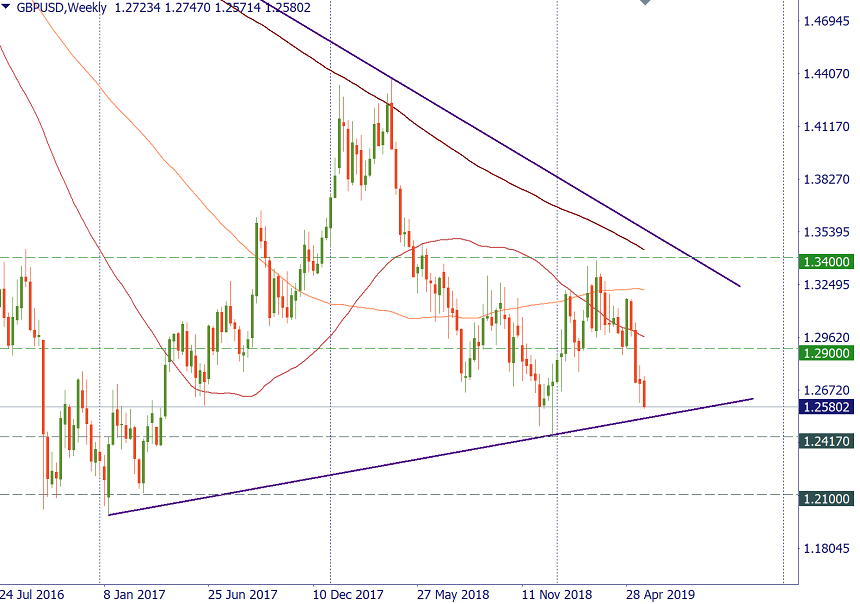
The G20 summit took place in Bali, Indonesia, on November 2022…
For a seamless experience, click “Redirect me.”

Don’t waste your time – keep track of how NFP affects the US dollar!
Data Collection Notice
We maintain a record of your data to run this website. By clicking the button, you agree to our Privacy Policy.

Beginner Forex Book
Your ultimate guide through the world of trading.
Check Your Inbox!
In our email, you will find the Forex 101 book. Just tap the button to get it!
Risk warning: ᏟᖴᎠs are complex instruments and come with a high risk of losing money rapidly due to leverage.
71.43% of retail investor accounts lose money when trading ᏟᖴᎠs with this provider.
You should consider whether you understand how ᏟᖴᎠs work and whether you can afford to take the high risk of losing your money.
Information is not investment advice
It will soon be the 3-year anniversary of the Brexit referendum. Nevertheless, as you know too well, no Brexit happened during this time. The big date to watch now is October 31: it’s when the time the European Union gave to Britain to solve its internal political problems and decide on its further relationship with the bloc runs out.
Before October, there will be another milestone to take in. Theresa May will leave her position of PM on June 7.
It’s clear that, given all that happened and didn't happen, the new Prime Minister should be a person of great authority and strong leadership skills. He or she will need to persuade investors and companies that Britain will offer a stable and business-friendly environment. Otherwise, the country’s economic future will be at risk.
So far, 11 members of the ruling Conservative party are fighting for leadership. The party will pick out 2 candidates and then all members across the country will vote. The key point used to evaluate each candidate is, of course, Brexit. More than half of the contenders are ready to have a no-deal exit from the European Union. The most popular candidate is former Foreign Secretary Boris Johnson. According to a YouGov poll for The Times, carried out before May’s resignation, 64% of Conservatives thought Johnson would make a good leader. Other frontrunners are Environment Secretary Michael Gove and former Brexit secretary Dominic Raab. Raab says that Britain may leave without a deal, while the position of Gove is less clear.
All in all, the cobwebs of British politics look rather complicated. There are alliances, conditions, maneuvers, and procedures — all the things we have already witnessed during the past years. It seems that while the Conservatives in Parliament lean towards avoiding a no-deal scenario, the majority of the overall party members favor the opposite option. As a result, uncertainty is big and strong.
Notice that the Conservative Party won’t be able to choose the new PM right after May goes away: the hope is to accomplish this task before Parliament breaks for its summer recess, i.e. the end of July. The first week of June will likely bring more candidates to the race. The election will, for sure, be the main topic that drives the GBP.
Some analysts argue that the no-deal Brexit is already priced in the pound’s exchange rate, so the GBP won't depreciate much further. Many market players also believe that Britain may take decisive steps if the threat of such an outcome becomes more evident, including calling a general election that would be probably won by the pro-EU Labor party. Even if it’s true, for now, the British currency has no reason to recover and thus may continue gravitating lower.
If the UK gets a PM who accepts Brexit without an agreement with the EU, the GBP will still be vulnerable for the declines versus the USD and the EUR. The levels of December will act as potential targets, but a bigger decline is also possible. The Bank of England will meet on June 20 but it’s not likely that the central bank will be able to say something optimistic to support the pound. Follow the news and mind the political risks when you decide how to trade the GBP!

GBP/USD, weekly chart

The G20 summit took place in Bali, Indonesia, on November 2022…

The deafening news shocked the whole world yesterday: the British Queen Elizabeth II died peacefully at the age of 96…

After months of pressure from the White House, Saudi Arabia relented and agreed with other OPEC+ members to increase production.

eurusd-is-falling-what-to-expect-from-the-future-price-movement

Greetings, fellow forex traders! Exciting news for those with an eye on the Australian market - the upcoming interest rate decision could be good news for Aussies looking to refinance or take out new loans. The Mortgage and Finance Association Australia CEO, Anja Pannek, has...

Hold onto your hats, folks! The Japanese yen took a nosedive after the Bank of Japan (BOJ) left its ultra-loose policy settings unchanged, including its closely watched yield curve control (YCC) policy. But wait, there's more! The BOJ also removed its forward guidance, which had previously pledged to keep interest rates at current or lower levels. So, what's the scoop? Market expectations had been subdued going into the meeting, but some were still hoping for tweaks to the forward guidance to prepare for an eventual exit from the bank's massive stimulus
Your request is accepted.
We will call you at the time interval that you chose
Next callback request for this phone number will be available in 00:30:00
If you have an urgent issue please contact us via
Live chat
Internal error. Please try again later